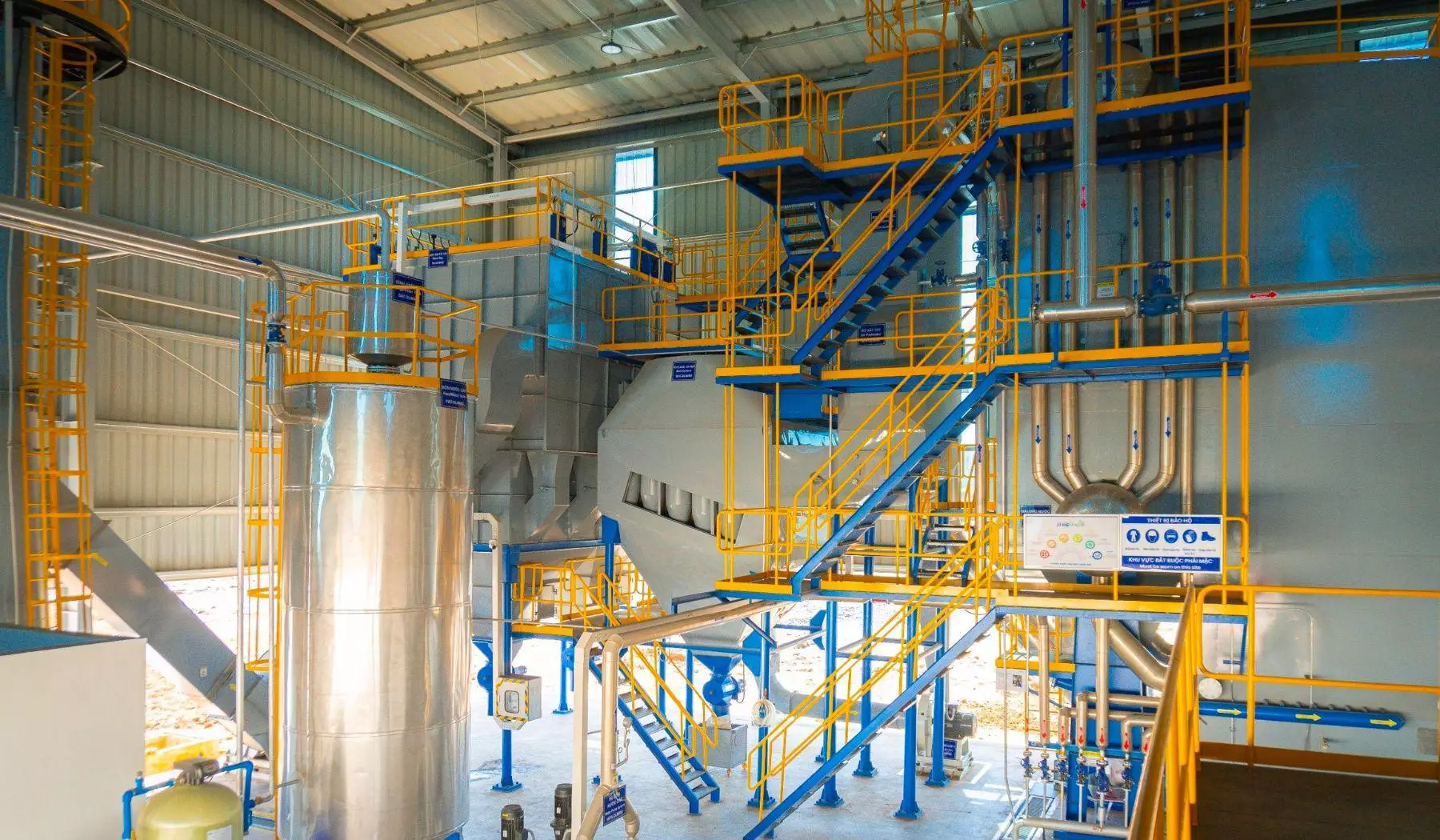1. WHY SHOULD BUSINESSES SWITCH FROM FOSIIL FUELS TO BIOMASS?
ECONOMIC AND ENVIRONMENTAL BENEFITS
Transforming from using fossil fuels (coal, oil, gas) to biomass not only helps businesses reduce operating costs, but also contributes to lowering greenhouse gas emissions and protecting the environment. This shift is becoming essential as the government enforces stricter regulations on industrial emissions and as businesses increasingly move toward sustainable production practices.

2. COMPARING ECONOMIC EFFICIENCY: BIOMASS VS. FOSSIL FUELS
2.1. INITIAL INVESTMENT COST
Biomass boilers require a higher initial investment due to the need for fuel feeding systems, fuel storage areas, and flue gas treatment equipment.
Oil/gas boilers have lower upfront costs, but the fuel costs are significantly higher.
Coal-fired boilers share similar investment costs to biomass boilers but require a more complex dust and emissions treatment system.
2.2. Fuel and Operating Costs
| Fuel Type | Average Price (VND/kg) | Cost to Generate 1 Ton of Steam (VND) |
|---|---|---|
| Diesel (DO) | ~18.000 | ~1.900.000 |
| Coal (fine) | ~3.000 | ~337.000 |
| Sawdust | ~1.200 | ~260.000 |
| Rice Husk Pellets | ~1.500 | ~312.000 |
💡 Conclusion: Businesses can save 50–80% on fuel costs by switching to biomass.
2.3. Maintenance Costs
Biomass boilers require more frequent maintenance due to ash residue, but the operation system is simpler than coal-fired boilers.
Oil/gas boilers require less maintenance, but the fuel cost is significantly higher.
Coal-fired boilers have high maintenance costs due to ash and dust, which can clog the piping system easily.
3. Environmental Impact Comparison: Biomass vs. Fossil Fuels

3.1. Reduction in Greenhouse Gas Emissions
Biomass emits almost no net CO₂, because the CO₂ released during combustion was previously absorbed by the plants during growth.
Fossil fuels like coal, oil, and gas emit large volumes of CO₂, contributing significantly to climate change.
3.2. Reduction in SOx, NOx, and Fine Dust Emissions
| Pollutant | Coal Boiler | Oil/Gas Boiler | Biomass Boiler |
| CO₂ | High | High | Low |
| SOx | High | Medium | Very Low |
| NOx | High | Medium | Low |
| Fine Dust | High | Low | Low |
💡 Conclusion: Biomass boilers can reduce up to 90% CO₂, 80% SOx, and 95% NOx emissions, helping businesses meet environmental compliance standards.
4. The Process of Converting to Biomass Boiler Technology
STEP 1: SITE SURVEY & INITIAL ASSESSMENT
– Inspect the current boiler system and assess the plant’s steam and thermal energy demand.
– Survey the available space and layout for possible boiler installation.
– Collect key information related to the factory’s design and operational requirements.
– Gather relevant legal and regulatory documents (Environmental permits, Fire safety (PCCC) approvals, Construction and zoning compliance).
STEP 2: CONVERSION PLANNING & COST ESTIMATION
– Select the appropriate boiler or thermal system technology based on the business’s needs.
– Define the technical and equipment requirements for the biomass system.
– Prepare a detailed investment and production cost estimate plan.
– Compare the projected efficiency and cost savings with the current (existing) system.
STEP 3: CONTRACT NEGOTIATION, SIGNING & PERMITTING
– Negotiate the contract terms and implementation conditions with the client.
– Sign the official agreement between all parties involved.
– Obtain all required legal permits before execution (Environmental permits, Fire safety (PCCC) approvals, Construction and zoning compliance).
STEP 4: BOILER SYSTEM DESIGN & INSTALLATION
– Prepare the site and supporting infrastructure for installation.
– Install the biomass boiler system and auxiliary equipment.
– Conduct inspection, testing, and final acceptance before commissioning.
STEP 5: TRIAL OPERATION & SYSTEM OPTIMIZATION
– Conduct test runs and measure system performance.
– Fine-tune operational parameters for optimal efficiency.
– Provide training for on-site operating personnel to ensure safe and effective usage.
STEP 6: POST-CONVERSION SYSTEM MANAGEMENT & MAINTENANCE
– Develop a routine maintenance schedule for long-term reliability.
– Monitor system performance and fuel consumption regularly.
– Manage ash disposal and environmental compliance effectively.
5. COnclusion: Converting to Biomass Fuel Is the Key to Sustainable Growth
Transitioning from fossil fuels to biomass enables businesses to reduce operating costs, ensure sustainable production, and stay compliant with environmental regulations. With both economic and environmental benefits, biomass is the ideal solution for factories and industrial operations in the shift toward green energy.
🌱 Looking to switch to a biomass boiler system? Contact Vietnam Zero Waste today for a free consultation! 📞 Hotline: 0975-337933 | ✉ Email: info@vietnamzerowaste.vn | 🌍 Website: www.vietnamzerowaste.vn


